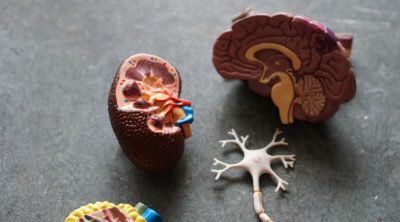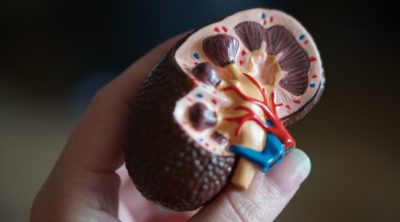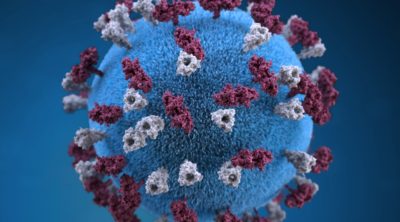
The heart, one of the most significant organs in the human body, is nothing but a muscular pump which pumps blood throughout the body. The human heart and its functions are truly fascinating. The heart, though small in size, performs highly significant functions that sustains human life.
The human heart resembles the shape of an upside-down pear, weighing between 7-15 ounces, and is little larger than the size of the fist. It is enclosed in a bag-like structure called the pericardium, and is located between the lungs, that is in the middle of the chest, behind and slightly to the left of the sternum or breast bone. It beats approximately 72 times per minute, and pumps oxygenated blood to different parts of the body. The pumped blood also removes waste products from the body. Observing a diagram of the heart, as the one here, will help comprehend the different parts of the human heart.
Atria and Ventricles
The human heart, comprises four chambers: right atrium, left atrium, right ventricle and left ventricle.
The two upper chambers are called the left and the right atria, and the two lower chambers are known as the left and the right ventricles.
The two atria and ventricles are separated from each other by a muscle wall called ‘septum’. The septum separates the ventricles from each other.
The right atria receives deoxygenated blood from the venae cavae (superior and inferior) and from the heart muscle (coronary sinus). It pumps the blood it receives into the right ventricle. Since it only pumps blood into the next chamber of the heart (right ventricle), its walls are not too thick.
Ventricles have thicker walls than the atria, because they need to pump blood to the body. The right ventricle pumps deoxygenated blood, which it receives from the right atria, into the pulmonary artery, which takes it to the lungs.
The left atrium receives oxygenated blood from the lungs via the pulmonary vein, which it pumps into the left ventricle.
The left ventricle pumps oxygenated blood, which it receives from the left atria, into the aorta, which takes it to the different parts of the body. The left ventricle is the strongest and largest chamber in the heart. Its walls are only half-inch thick, however, they possess the strength to push the blood into the aorta.
Valves
The heart features four types of valves which regulate the flow of blood through the heart. These valves have been clearly shown in the labeled diagram of the heart. They permit blood flow in one direction only, and prevent backflow of blood. The four types of valves are:
Tricuspid Valve
The tricuspid valve separates the right atrium from the right ventricle, and regulates the blood flow between them. Also referred to as the atrioventricular valve, the tricuspid valve allows blood to flow from the right atrium into the right ventricle, and prevents backflow of the same.
Pulmonary Valve
The pulmonary valve separates the right ventricle from the left pulmonary artery. This valve is a semilunar valve, with three cusps. As the right ventricle contracts, the valves open and blood flows into the left pulmonary artery. When the right ventricle relaxes, the valves close, thereby preventing backflow of blood. Thus, these valves control the flow of blood from the right ventricle into the left pulmonary artery.
Mitral Valve
Also referred to as bicuspid valve or left atrioventricular valve, the mitral valve has two cusps. This valve separates the left ventricle from the left atrium. The left atrium contracts to pump the oxygenated blood it received from the pulmonary vein into the left ventricle. As the left atrium contracts, the mitral valve opens and closes when the left atrium relaxes, thereby preventing backflow of blood.
Aortic Valve
The aortic valve separates the left ventricle from the aorta, and controls the blood flow from the ventricle into the rest of the body. As the left ventricle contracts, the aortic valve opens and allows blood to flow out from the left ventricle, into the aorta, and when it relaxes, the valve closes to prevent backflow of blood.
Blood Vessels
The network of blood vessels in the human body is such that it connects all the organs of the body to the heart. The main function of the blood vessels is to transport oxygenated blood from the heart to the rest of the body (via the lungs), and collect deoxygenated blood from the different organs and take it to the heart for oxygenation (which takes place in the lungs).
Arteries
Arteries take oxygenated blood away from the heart, except the pulmonary artery, that takes deoxygenated blood to the lungs for oxygenation. Arteries are blood vessels that transport oxygen-rich blood to the capillaries, where actual exchange of carbon dioxide and oxygen takes place.
Arteries are smooth on the inside and tough on the outside. Their muscular wall helps the heart to pump blood. When the heart beats, the arteries expand and get filled with blood. When the heart relaxes, contraction of the arteries takes place, which exert enough force to push the blood along the blood vessels. It is this rhythmic movement between the heart and arteries which result in an efficient circulation system.
Pulmonary Artery
Usually arteries are characterized with the transport of oxygenated blood, however, the pulmonary artery is an exception. It carries deoxygenated blood from the right side of the heart to the lungs for purification. The pulmonary artery divides into the right and left branch, which take the blood to the right and left lung respectively
Aorta
This is the main artery of the heart, which carries oxygenated blood from the left side of the heart to the rest of the body. This main artery branches into several smaller arteries, which then supply fresh oxygenated blood to the body.
Coronary Arteries
The coronary arteries are attached to the heart and supply oxygenated blood to the heart muscles. The coronary arteries are of two types: right and left coronary arteries. Together, these arteries supply oxygen-rich blood to the atria and ventricles of the heart.
Veins
Veins are like arteries, however, are not as strong as arteries as they do not have to transport blood at high pressure. After the exchange of carbon dioxide and oxygen takes place between the arteries and capillaries, the blood containing waste products is received by the veins.
Pulmonary Vein
Veins are generally characterized as blood vessels carrying deoxygenated blood to the lungs, however, the pulmonary vein is an exception. It carries oxygenated blood from the lungs to the left side of the heart. The pulmonary vein has four branches: two right pulmonary veins and two left pulmonary veins. All four branches pour oxygenated blood into the left atrium of the heart.
Venae Cavae
These are two large veins carrying deoxygenated blood from the body to the heart. The superior vena cava brings deoxygenated blood from the parts of the body located above the heart, such as chest, arms, neck and head regions into the right atrium. The inferior vena cava on the other hand collects blood from the parts of the body located below the heart into the right atrium.
Coronary Sinus
If the coronary arteries bring oxygen-rich blood to the heart chambers, the coronary sinus collects deoxygenated blood from the heart muscles and takes it to the right atria, along with the venae cavae.
Heart Muscles/Cardiac Muscles
The wall of the heart can be divided into three layers; outer epicardium, inner endocardium and middle myocardium. The myocardium, which consists of the cardiac muscle tissues, is responsible for the contraction of heart chambers for pumping of blood. Its contraction and relaxation leads to the heartbeat, we all are familiar with.
The involuntary, striated heart muscles control the contraction and relaxation of the heart chambers, and the pumping of blood. This type of muscle is found only in the heart and the unique feature about these muscles is that they never tire out. They work non-stop since birth till death. Cardiac muscles require constant supply of oxygen and lack of it causes damage.
The way the heart functions is really remarkable. This hollow muscular organ pumps blood via a well-organized network of blood vessels. It comprises valves which allow the blood to flow only in one direction. The blood pumped by the heart not only provides nutrients to the body cells, but also removes the waste materials from different parts of the body. The above labeled diagram can be modified as per your requirements for kids. Heart diagram for kids can be printed out and colored, to make it easier to understand.



